|
Part 2: The True State Of The Qur'an
Back To Part 2 Index
Returning to M. Ali’s list, we look among the other texts for his examples of Q3:159 (3:158 in other texts) and Q3:166. The Indian text with transliteration which we are using contains alif in only Q3:166. However, in Taj #23 a notable space exists in Q3:166 where alif used to be, as in where alif used to be, as in  . .
Strangely the Iranian Embassy does not hand out an Iranian text!!2 They too seem content with many ‘versions’ of the Arabic text.
Truly ‘NO’s Are Changed Into ‘YES’s! - Changes In Meaning
We have seen that M. Ali has, in his Introduction, addressed the all-important issue of the vast difference in meaning which this brings to the passages in question.
This, of course, is ultimately the reason purported by the followers of Islam for the need for ‘Protection’ of the Qur’an, to ‘Preserved’ the meaning. To highlight this we have chosen four of the aforementioned texts
Assessing both ibn Khaldun’s and M. Ali’s statements as well as that of the translations in the existing printed texts, we see:
- Q3:158 "not unto Allah" has been altered into "certainly unto Allah".
- Q3:166 "we would not have followed you" has been altered to say "we would certainly have followed you".
- Q27:21 "I [Allah] would not slay" has been altered into "I [Allah] will certainly slay".
- Q37:68 "their return is not unto Hell" has been altered into "their return is certainly unto Hell"
[NOTE: Hamidullah even gave this meaning difference in his article].
THIS is the consequence of ignoring these alifs in terms of the meaning of the Qur’an.
All this means that, despite all its declarations to outsiders that "they will all be found to be identical" because of ‘Divine Protection’, Islam continues to accept and publish these further graphic differences as its ‘best’ remaining heritage. Thus, inside Islam ‘perfection’, uniformity, even tampering do not seem to matter. We also see why some (like IPCI) cry "It’s only the sound that matters!", since Islam simply juggles the errors [as the Saudis admit - the ‘original’ content!] to obtain the ‘desired’ sound - and words!!
[NOTE: One observer has noted that the alifs found in Q3:159, Q9:47, and Q59:13 are alifs which do not create ‘no’ instead of ‘yes’. However, they are alifs which are out of place, and are scribal errors.]
Back To Top
116
Part 2: The True State Of The Qur'an
Back To Part 2 Index
And What Of The ‘Original’ Samarqand Manuscript?
The Samarqand MSS content will also be of interest to some.
The upper text shows Page #137, lines 7-12. The uppermost pair of circled texts is from Q3:158 which clearly is a ‘NO’ since it contains the alif. The second pair of texts circled is Q3:159 which omits the alif.
The lower text is Page #648, lines 10-12, with Q37:68 written without alif (see circled text) and so giving ‘YES’.

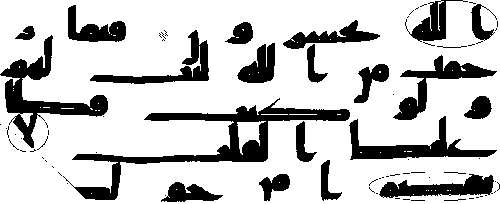

In Conclusion
We have read M. Ali’s declaration, one of the diverse but ‘accepted’ positions of Islam, namely that the Qur’an has been faithfully copied until today - ‘exactly as Muhammad certified it’:
"The transcription of the Holy Qur’an as it was written by the scribes in the Prophet’s time has in fact been preserved intact..." (Introd., p. lv)
Elsewhere he writes:
"The circumstances attending the collection of the Holy Qur’an in the time of Abu Bakr also show that every verse of the revelation had been written down in the presence of the Holy Prophet." (Introd., p. xxviii)
If this were so, then everyone has admittedly been copying mistakes which Muhammad sanctioned! One cannot ignore the presence of such textual problems in a ‘Divinely Preserved’ text, especially when it is admitted that at least some come from Muhammad as copied by his scribes and the theology says that the prophet’s oversight on the scribes ‘guarantees’ the perfection of the revelation!
We can understand why others would rather blame the errors on ‘Uthman’s scribes than on Muhammad’s scribes and his oversight!
Further, as to the general presence of these textual problems in the existing texts, we note the variation in their numbers in the printed texts which are purported to be Hafs (Kufan based) texts: Iranian - 1; 1924 Egyptian & Turkish - 13 (different from Iranian 1) ;Taj #119 - 2; Pakistani
Back To Top
117
Part 2: The True State Of The Qur'an
Back To Part 2 Index
Taj (as Hamidullah) - 4; Surty’s text - other 4; Deedat (IPCI) - (Old versions - 5) / (New versions - 1); M. Ali [Taj?] as in the Swahili and M. Pickthall, Indian - 6; M. Ali as in Notes - 7!! [See chart depicting all this.]. This indicates that the regional manuscript traditions of the Qur’an vary considerably in the number of ‘problems’ they contain.
But which of these number represents the truth as to how many of these extra alifs (and in the appropriate places, the ‘NO’s) the Qur’an is purported to have contained ‘originally’, let alone the purported Kufan Quran? Was it the one with "4 or 5" as Hamidullah stated it, or the one with 7 which M. Ali has been referring to [or the one with 6 that he published]? And, finally, we note that the texts with the same number of ‘extras’ do not place them all in the same spots! Which is ‘original’!
And too, which of these Qur’ans did ibn Khaldun accept as representing the ‘original’? It certainly had more ‘problems’ than the Egyptian EDITION for it had the problem in Q9:47 also.
Speaking of the Egyptian EDITION, it is necessary to consider it as an adulteration on other grounds also, not just in the matter of Q9:47 which the Saudis admit was transmitted by ad-Dani. This is because Otto Pretzl noted that the Egyptians had ignored four alifs which ad-Dani had documented in the ‘Oral Tradition’ (Studies..., Ph.D., Brockett, p. 10). Perhaps they represent several of the ‘NO’/ ‘YES’s.
Naturally, Islam must maintain a general silence on such varying numbers of errors, for the admission that Muhammad’s scribes made errors in his presence or while copying what he authorised is to negate the religion. To admit that later scribes made errors is to admit bad bid’ah (innovation), ‘post-revelational’ corruption! And in those circumstances also, no-one could be certain that much else has not also happened to the text!
Of course, if we thought the Qur’an was a true revelation, then we would have to examine the distinct possibility that Islam, which is constantly accusing others of abandoning their ‘original’ teachings as purported to have been ‘in their Books’, did this very thing and thus had to falsify the Arabic text as it is doing.
It is in order to avoid all such suspicions that Islam claims it possesses ‘originals’ - something else it doesn’t have. In this case the illusion of an ‘original’ cannot calm anyone’s mind for to possess one would only tell people exactly how many problems of this type there were to start with!
If the Gospel records were like this Islam would cry that this was ‘Proof’ of a need to reject them. In Islam’s case the need is plain - "Allah" failed.
Back To Part 2 Index
Back To Top
118
CHAPTER XI (CONT'D)
Footnotes
1/ Hamidullah’s article was published in Pakistan and is mainly a reflection of the condition of the Hafs texts of Pakistan and India. It also makes reference to the Egyptian Edition and certain features found there.
Yet, upon examination of the entire article, and the "second list" [LIST B] just mentioned, one is unable to find a single case of where the Qur’an says ‘yes’ when it should say ‘no’, let alone "four or five" of them! However, one does find, among many other things, four cases which are of the same type as Q27:21, where the Qur’an says "no" when it should say "yes"! Of course it is understandable that Hamidullah would want to hide things like this!
The fact that he mentioned "four or five cases" is not indicative that he doesn’t know.
2/ The text received (see text of card at right),

differs from our other Iranian one, and in fact is an Indian text.
Their texts compare as follows - the Iranian text is shown first:
Q3:158(7) 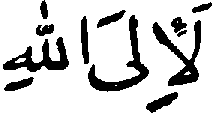 ( (  ); );
Q3:159(8)  ( ( ); );
Q3:166 ( ( ) ; ) ;
Q9:47 ( ( ) ; ) ;
Q27:21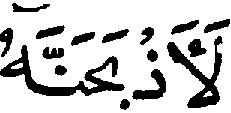 ( (  ); );
Q37:68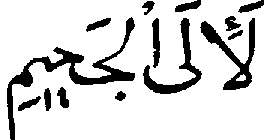 ( ( ). ).
THESE TEXTS DISAGREE IN 3 OUT OF 4 INSTANCES OVER THE ISSUE OF WHETHER "ALLAH" SAID ‘NO’ OR ‘YES’!!
They both decided to ‘correct’ Q27:21 from ‘NO’ to ‘YES’. They also disagree in several places where the scribes made mistakes.
3/ Since the Turkish text has only a very light graphic alif in Q27:21, it seems obvious that it was a last minute insertion, as Brockett noted in one such case. As there is no evidence of any of the other ‘NO’ / ‘YES’ problem texts and since the Iranian text overall is extremely close to the Turkish text and has omitted 5 out of the 6 alifs, this is an indication that only at the last minute did they decide not to eliminate all of them in the Turkish text too.
4/ In point of fact all of Islam is doing this ‘outwitting’ with the Yusuf Ali translation. The latest production is with the so-called Mushaf Al-Madinah in which the translation agrees more than the Arabic text.
* * *
LATE ADDITION:
- Grammar Book Proof For One ‘YES’/’NO’ Occurrence - Q3:158
In W.Wright’s A Grammar of the Arabic Language (Vol. II, Sec. 20, pg. 41) under the heading 
we find the presentation of Q3:158 in a "Rem." (see at right). 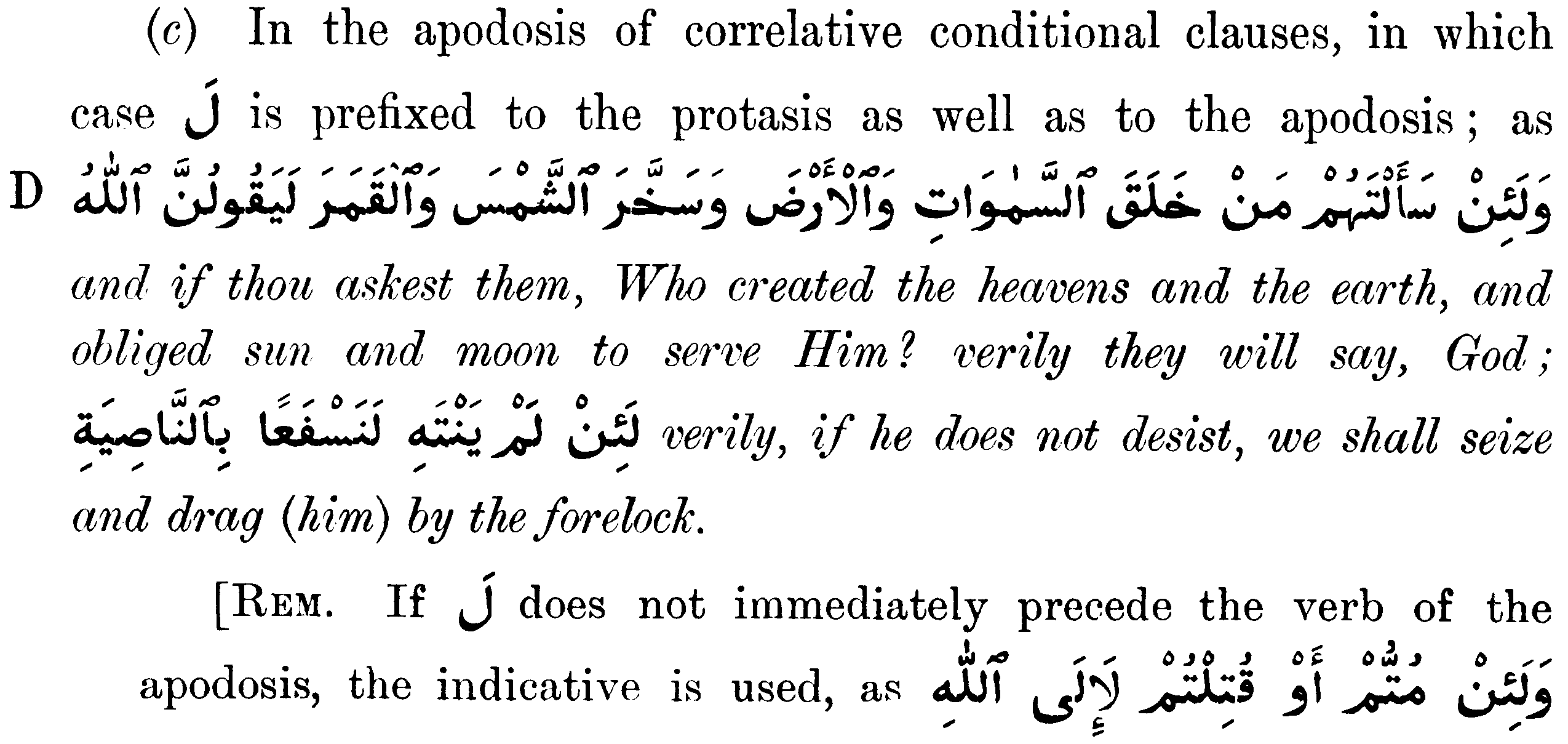

This grammatical construction leaves no alternative but that Q3:158 with the extra alif be translated "and certainly if you die or are slain, to God you shall NOT be gathered".
Thus we find in an accepted book of Arabic grammar, ‘Proof’ in this ‘YES’/ ‘No’ area.
Back To Part 2 Index
Back To Top
121 |

 which shows that some are not averse to correcting the mistakes in the Qur’an and so it is "made to appear" to be ‘perfect’.
which shows that some are not averse to correcting the mistakes in the Qur’an and so it is "made to appear" to be ‘perfect’.  ) this is from the 1924 Egyptian Edition), is then a manipulation of the text to say ‘certainly’. The single unwanted alif is ‘silenced’ [note the ‘otiose’ "sign of silence" above the unwanted alif in the 1924 Egyptian
) this is from the 1924 Egyptian Edition), is then a manipulation of the text to say ‘certainly’. The single unwanted alif is ‘silenced’ [note the ‘otiose’ "sign of silence" above the unwanted alif in the 1924 Egyptian  , Q9:47
, Q9:47  , Q37:68
, Q37:68 , while extra alifs remain in the Pakistani Taj #23 which has Q3:158
, while extra alifs remain in the Pakistani Taj #23 which has Q3:158 , Q9:47
, Q9:47 , Q37:68
, Q37:68 
 . The excess alif is easily noted in these latter cases.
. The excess alif is easily noted in these latter cases.  - the extra alif has been removed. The same can be seen in Q37:68 where we find
- the extra alif has been removed. The same can be seen in Q37:68 where we find 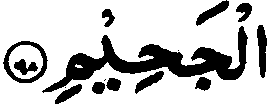
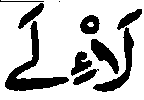 .
. 
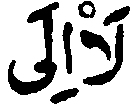 ; in Q9:47 one alif is ‘silenced’
; in Q9:47 one alif is ‘silenced’  ; in Q27:21
; in Q27:21 ; and in Q37:68
; and in Q37:68 again with one alif ‘silenced’.
again with one alif ‘silenced’.  .
.  where alif used to be, as in
where alif used to be, as in  .
. 



 (
(  );
);  (
( );
);  (
( ) ;
) ;  (
( ) ;
) ; (
(  );
);  (
( ).
). 
